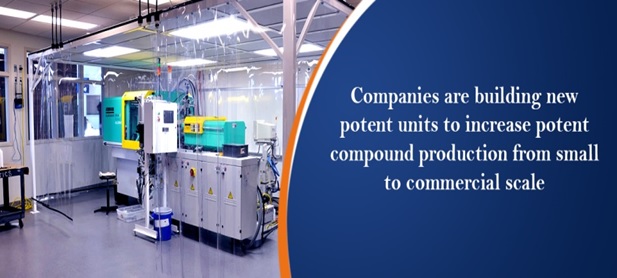To clarify, HPAPI are essentially active ingredients that exhibit a biological response even with a significantly low dosage, requiring a limitation in exposure of individuals operating in the vicinity of these ingredients. This exposure is classified into certain categories according to the effects it may have depending on its competency.
Occupational Exposure Band (OEB) Levels
- Occupational Exposure Limit (OEL) of greater than 500 µg/m3: These compounds are generally associated with having pharmacological activity on the lower end being deemed less harmful.
- Occupational Exposure Limit (OEL) of 10-500 µg/m3: These compounds are generally associated with having moderately toxic pharmacological activity.
- Occupational Exposure Limit (OEL) of 03-10 µg/m3: These compounds generally provide high levels of toxic pharmacological activity. The chemicals which are unknown regarding their toxicity levels are classified under this category by default.
- Occupational Exposure Limit (OEL) of less than 0.03 µg/m3: These compounds are known to be highly toxic and are associated with having very high pharmacological activity.
The major requirement of this classification of accepted exposure levels is to provide the manufacturing organizations with information regarding how much containment/isolation is required, and how much area would be required in their facilities for the continuous usage and development of high potency medicines.
Major manufacturers have started adopting HPAPI so that major costs associated with warehousing, manufacturing and distribution can be reduced essentially resulting in reduced supply chain costs. This has been a result of availability of larger quantities of HPAPI. The quantity of drugs currently commercially available in the market; which are known to use small molecule highly potent drugs stand at more than 1,000 approximately and this is expected to grow every year with a healthy rate.
[caption id="attachment_39878" align="aligncenter" width="617"] Contribution in prosperity and liability of HPAPI in High Potency Medicines[/caption]
Contribution in prosperity and liability of HPAPI in High Potency Medicines[/caption]
This major trend in adoption of HPAPI can be reasoned out to plenty of factors:
- Greater profit margins associated with HPAPI: Although, there is a certain requirement in investing large sums/amounts for establishing the facilities capable of handling the development of high potency medicines. The return on investments associated with the usage of API’s is significant as small quantities of API’s are highly effective and therefore require smaller space for storage, transportation and delivery. This is also a result of growing quantities of API flooding the market.
- Availability of complicated & niche API: This is evidence of the fact that a larger group of small developers/producers are specializing in API’s which are more complicated than ever before and these newly developed products require for them to be classified under the appropriate toxicity level. The development of these niche levels of API’s results in presence of compliances outlined by the authorities of different regions regarding the usage & optimal quality of these products.
- Outsourcing the API’s: Pharmaceutical organizations rather than focusing on their own API’s have started outsourcing these operations to specialized manufacturers whose operations are developing more complex API in greater quantities so that the supply chain of high potency medicines is not affected. The focus of pharmaceutical organizations is choosing more appropriate sources/partners which are fully equipped with appropriate tools, machinery knowledge and skillsets to further the availability of essential API’s.
Conclusion
Although, the usage of HPAPI’s is not just limited to certain therapeutics, rather they are being utilized in complete pharmaceutical developments whether they are for generics, or innovative formulations and major pharmaceutical organizations are adopting outsourcing the API’s rather than engaging in developing them on their own, even with highly complicated levels of API.
Major authorities have started restricting the usage of API’s from niche or unknown sources, proposing bans on trades of these compounds as the clinical data or information is falsified in certain cases and this induces risks for developing the medicines. The main focus of these authorities is not to restrict the usage of API’s from these sources rather having consistent quality of compounds with authentic information and data, so that the complications of high potency medicines can be diminished.
These factors might seem significant at first, but if the pharmaceutical organizations and API developers begin focusing on partnerships, collaborations and further advancements dealing in R&D of high potency medicines, they will bear its benefits in the long run.










